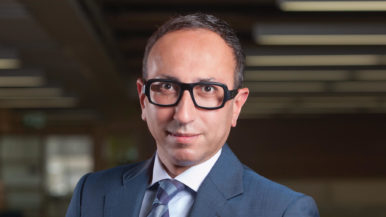Q&A: author Sarah Barmak explains the art of the orgasm

Over the past three years, Sarah Barmak has attended countless sex workshops, received a therapeutic yonic massage and communed with the divine feminine at Burning Man. She collected those experiences in her new book, Closer: Notes from the Orgasmic Frontier of Female Sexuality, a deeply researched and warmly personal exploration of the female orgasm. We asked Barmak to tell us what she learned about the size of the clitoris, sex ed for teens and why it’s not crazy to call the vagina sacred.
What made you want to write about female orgasms?
Before I started writing the book, I was interested in the way society frames female desire as a mystery to be solved, like, “We’ve got our top scientists working hard on the problem of turning women on!” At first, I took that mystery at face value—when I was younger, learning about what I liked and didn’t like about sex was mysterious. I think it’s very common for women, and young women in particular, to think that there’s a right way to do it and you just have to figure that out. As I got deeper into the subject matter, I realized it’s not women who are confusing; it’s the way our culture frames and approaches sexuality that excludes female sexuality. That’s what makes women’s sexual expression so “mysterious.”
What was the most surprising thing you learned while researching?
Seeing a full-size illustration of the clitoris blew my mind. It’s so much larger than the little nub we assume it to be, which makes sense from a purely sensory perspective. But to see how much of it was below the surface was really eye-opening. It was also really fascinating to realize how much we’ve known about female orgasm for millennia: Roman doctors talked about it, South Asian poets wrote about cunnilingus and how to bring a woman to orgasm. All of this stuff is there. It’s not that we don’t understand it; it’s that we’ve made a decision as a culture not to value it.
Did you end up developing a reverence for the vagina?
You know what? I did. It’s cheesy, but hearing stuff like, “Your jade palace is sacred,” or learning about the concept that you can only enter after gaining permission, you approach it with reverence and remember that the vagina is literally the source of all human life—that little thing. It’s not a crazy idea. You don’t have to believe that there’s a god living in your vagina, but it can feel good to be like, “Yeah, it’s sacred.”

Closer is a journalistic book, but it’s also very personal: you delve into your own relationship with your sexuality, and discuss sexual experiences from your point of view rather than hiding behind a neutral voice. What made you decide to include yourself in the story?
At first, I was really resistant to do it. But it’s hard to write objectively when you’re talking about sexuality, relationships, trauma and pleasure. Unless you’re an academic researcher, it sounds so robotic: “This woman had 8.5 orgasms per week; it was quite average.”
The book reads like a corrective to the kinds of half-stories you get in girls’ high school locker rooms—the folk knowledge and pseudo-statistics like “one in four women can’t orgasm.”
It’s true. I remember, even before I started researching this, you’d always hear the apocryphal tale of some dude’s girlfriend who could bring herself to orgasm just by thinking about it. I hated those stories, because they made it seem like female sexuality was something to get good at—like a really-turned-on woman is the best thing you could be. Everything is turned into a competition. It took me a while to realize the whole point is accepting wherever you’re at. That acceptance is what brings you halfway toward feeling sexy in the first place. It sounds like a platitude you’d hear on Oprah, but it’s also true.
Overall, the book indicts our cultural approach to female sexuality: the “orgasm gap,” the lack of scientific studies about women’s sexual health or pleasure, the way women’s desire is commodified and presented as something that exists for men and not ourselves. But it ultimately seems hopeful. Do you think things are getting better?
That was a conscious choice I made in the book—to be optimistic. There’s a lot to be really sad about: Ghomeshi, Gamergate, the horrific online environment that exists for women. There are 13-year-old kids with no viable sex ed watching hardcore pornography. Ontario’s new curricula is a step in the right direction but it’s still not quite as far along it could be. But the positive stuff is there as well. It might not be as noticeable, because some of it is not adequately reported on, or it’s happening in holistic subcultures and marginalized communities of women you don’t hear about, such as the OneTaste orgasmic meditation movement, which I talk about in the book. Shining a light on those things can give us hope. It would have been hard for me to really finish the book if it felt like I was writing a negative or hopeless story.
Speaking of sex ed, what would you say if you were giving the sex talk to a teenage girl?
I’d say something about how sex can be really beautiful and fun and feel really good, and, at the same time, if it’s in a certain context, it can go too fast or feel wrong. Maybe something like: “While there might be a lot of people out there telling you what to do and how to do it, only you know when it’s beautiful, what feels good to you and when it doesn’t feel right. It’s going to be a process of discovery that’s going to last your whole life.”
Do you think you’ve finally found a topic you’ll keep writing about?
Definitely. There’s very little that can compete with the juiciness of sex.





